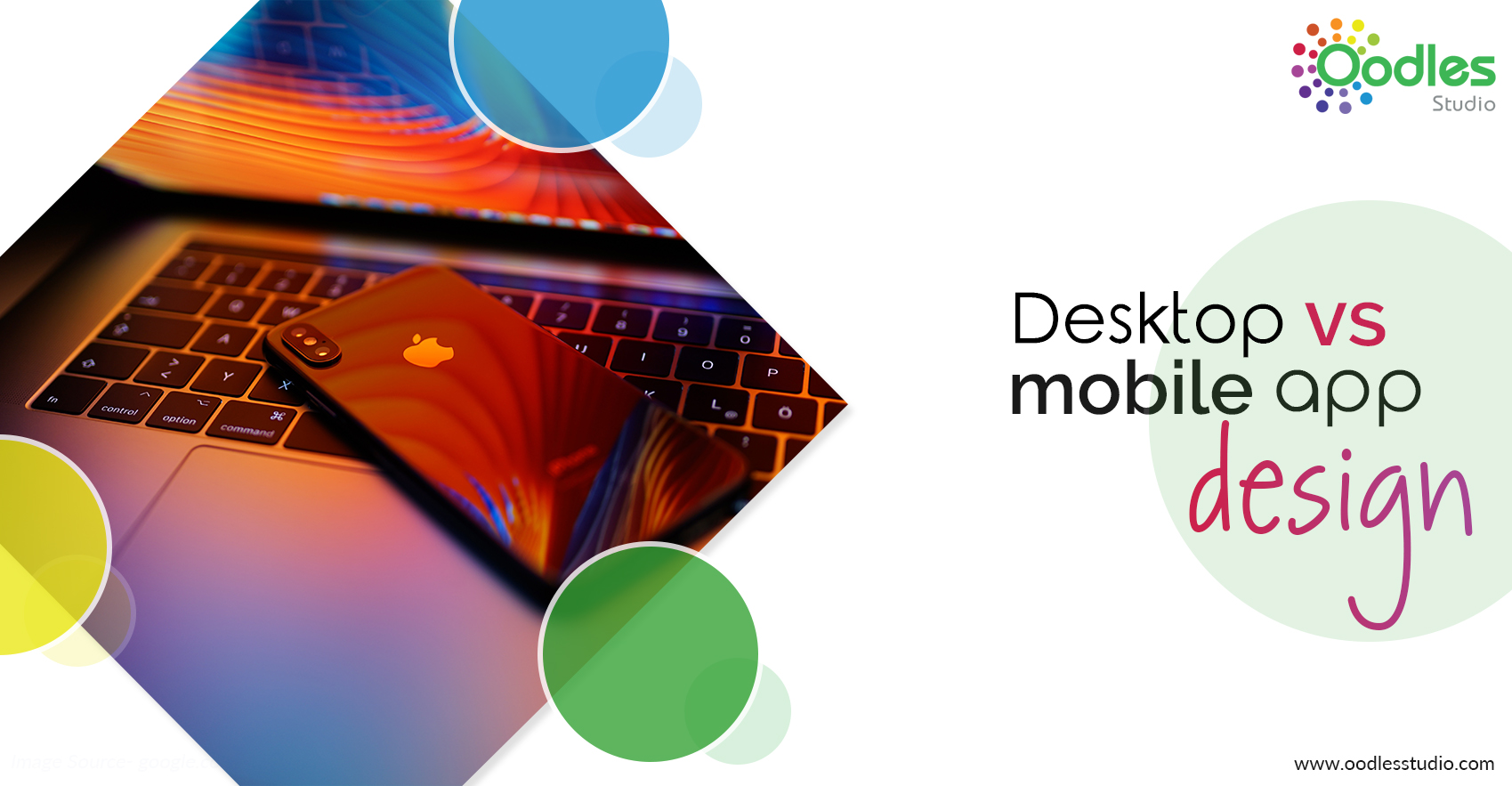Today, designers and website owners are yet scrambling to get up to speed. The work area plan techniques they’d put over the most recent ten years culminating have now turned into an optional skill, and the power has moved to the individuals who understand mobile.

For business people and designers alike, survival currently relies upon understanding the contrasts between desktop versus mobile app design and how to make the best of both.
Desktop vs. mobile app design: the big differences
—
Screen measure
Desktop = large
This implies significantly more than the chance to include more stuff. Screen measure influences all parts of outline, particularly route. Desktop applications can bolster settled route bars, while versatile is by and large constrained to haul out menus. This is very successful for discoverability, since clients may discover new segments they didn’t beforehand think about.
Mobile = small
Mobile applications must ration screen space wherever they can, so you should know about which components are sufficiently imperative to appear.
Interaction
Desktop = cursors
Desktop applications can make full utilization of cursor intelligence: things like float content or cursor-activated liveliness. This permits work area applications to highlight whole screens loaded with pictures, with elucidating content just showing up on float.
Mobile = gestures
You can’t float or rollover on versatile applications, yet you have an endless slate of motions actually readily available. Swiping, shaking, or great ol’ formed jabbing bring a radical new arrangement of chances to applications (and they make them more fun).
Organizing content
Desktop = columns
Any substance on the Desktop can show up in a conventional multi-section organize—simply like print content in daily papers and magazines. This offers a lot of adaptability for planning formats and situating content, pictures and UI components.
Mobile = scrolling
When content achieves a specific length, portable applications need to utilize long looking over. Also, that is not a terrible thing! Versatile clients really favor ceaseless looking over, also, this method saves screen space while making collaboration more fun with motions. Long looking over is another versatile outline drift that has exchanged over to the desktop due to its fame.
Mobile = portrait and landscape
Dissimilar to work area screens, versatile applications can switch amongst picture and scene sees freely. For designers and website owners, this is a gift and a revile.
Two screen introductions take into consideration greater usefulness and better client personalization, yet it can regularly require twice as much design work.
Best practices for desktop vs. mobile app design
—
Go mobile-first
In case you’re making an application that is for both desktop and mobile, begin with the versatile form first. It’s simpler to include components as you increment the screen size than it is to expel components as you shrivel the screen estimate. Going work area initial has a tendency to include all the more backtracking.
Organize components
Mobile screens just have space for the most noteworthy parts of your design. You have to recognize what they are. Rundown out all your design components, and organize them from most to minimum imperative. This enables later when you to choose which components get the best screen areas and which cover up in ground sirloin sandwich menus.
Work with columns
As we specified, desktop applications take into account multi-segment groups, which empowers alternatives like a left-or right-sided route menu, sidebars for gadgets and promotions and space for card structures. That won’t fly on cell phones, however where a solitary, incorporated section is ideal. Compose your application content vertically (with promotions on the base). Put pictures above or beneath content however once in a while by it.
Utilize mobile’s advantages
We know you would prefer not to hear “more work,” yet there’s a distinction between outlining for mobile and basically making a desktop application for a cell phone. Utilize all the fun stuff you can do with mobile, including innovative gesture controls and exceptional sensors. These don’t simply enhance the convenience of mobile applications, they’ll likewise make them more fun and emerge.
Make your applications partners
—
We may make it seem like desktop and mobile are severe opponents, yet truly, more often than not clients utilize the two gadgets, notwithstanding for various
zones of the same errand.


